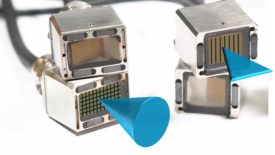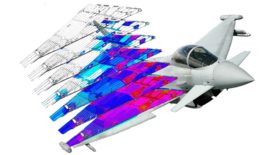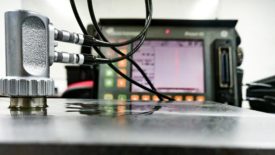Home » phased array
Articles Tagged with ''phased array''
NDT | Back2Basics
These technologies enhance the accuracy, speed, and thoroughness of flaw detection in critical components, contributing to improved safety and reliability in aerospace operations.
Read More
How to Choose the Right PAUT Probe for Every Inspection
A Comprehensive Guide for Industry Professionals
September 12, 2024
NDT | Back2Basics
Advancements in Ultrasonic Testing: Unveiling the Tidal Force of Plane Wave Imaging on Nondestructive Testing Techniques
Plane wave imaging represents a groundbreaking approach within the realm of phased array ultrasonic testing.
May 16, 2024
NDT | Ultrasonics
Smart Inspection: Latest developments and novel approaches in industrial ultrasonic testing
Compact design and automation are important aspects in meeting the inspection requirements of today and the future.
March 1, 2024
Test & Inspection
Phased array ultrasonic testing (PAUT)
Phased array ultrasonic inspection has become an indispensable tool in the aerospace industry, contributing to the safety and reliability of aircraft components.
December 31, 2023
NDT | Phased Array
Phased Array Ultrasound (PAUT) vs Phase Coherence Imaging (PCI) for Pipeline Inspection
One of PCI’s main strengths is detecting cracks that are vertical to the surface of the component.
October 3, 2023
NDT | Phased Array
Phased Array Ultrasonic Testing
Inspection reliability continues to improve thanks to the development of new imaging techniques like the total focusing method.
August 11, 2023
Aerospace | Phased Array
Phased Array Ultrasonic Testing: A Tutorial
While PAUT is becoming a popular approach for nondestructive inspections, it is important that users understand this technology, its limitations and how it should be applied.
July 11, 2023
NDT | Standards
The Evolution of Ultrasonic Testing (UT) from Conventional UT to Total Focusing Method
As technology continues to advance, ultrasonic testing advances too.
November 11, 2022
NDT | Phased Array
The Hilbert Transform’s Role in Transforming TFM
With improvements to TFG technology, more users of conventional phased array are showing interest in incorporating the method into their procedures.
August 8, 2022
Stay in the know with Quality’s comprehensive coverage of
the manufacturing and metrology industries.
eNewsletter | Website | eMagazine
JOIN TODAY!Copyright ©2024. All Rights Reserved BNP Media.
Design, CMS, Hosting & Web Development :: ePublishing









.jpg?height=168&t=1659976174&width=275)